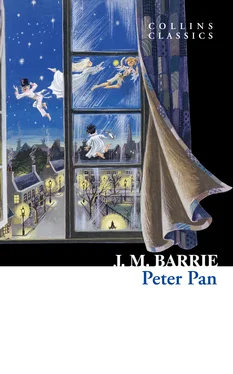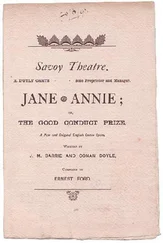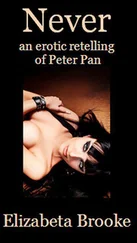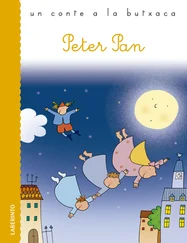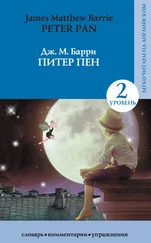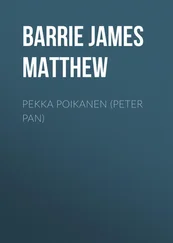Copyright Copyright History of Collins Life & Times Chapter 1 Chapter 2 Chapter 3 Chapter 4 Chapter 5 Chapter 6 Chapter 7 Chapter 8 Chapter 9 Chapter 10 Chapter 11 Chapter 12 Chapter 13 Chapter 14 Chapter 15 Chapter 16 Chapter 17 Classic Literature: Words and Phrases About the Publisher
William Collins
An imprint of HarperCollins Publishers
1 London Bridge Street,
London SE1 9GF
WilliamCollinsBooks.com
This eBook edition published by William Collins in 2015
Peter Pan by J. M. Barrie published in association with Great Ormond Street Hospital Children’s Charity.
Life & Times section © HarperCollins Publishers Ltd
Silvia Crompton asserts her moral right as author of the Life & Times section
Classic Literature: Words and Phrases adapted from
Collins English Dictionary
Cover by e-Digital Design
Cover image: Illustration for Peter Pan by J. M. Barrie (gouache on paper), Grahame Johnstone, Anne (Contemporary Artist)/Private Collection/Bridgeman Images.
The Author and the Publishers are committed to respecting the intellectual property rights of others and have made all reasonable efforts to trace the copyright owners of the images reproduced, and to provide an appropriate acknowledgement within this book. In the event that any copyright holders come forward after the publication of this book, the Author and the Publishers will use all reasonable endeavours to rectify the position accordingly.
A catalogue record for this book is available from the British Library.
All rights reserved under International and Pan-American Copyright Conventions. By payment of the required fees, you have been granted the non-exclusive, non-transferable right to access and read the text of this e-book on-screen. No part of this text may be reproduced, transmitted, down-loaded, decompiled, reverse engineered, or stored in or introduced into any information storage and retrieval system, in any form or by any means, whether electronic or mechanical, now known or hereinafter invented, without the express written permission of HarperCollins.
Source ISBN: 9780007558179
Ebook Edition © May 2015 ISBN: 9780007558186
Version: 2016-02-29
History of Collins History of Collins Life & Times Chapter 1 Chapter 2 Chapter 3 Chapter 4 Chapter 5 Chapter 6 Chapter 7 Chapter 8 Chapter 9 Chapter 10 Chapter 11 Chapter 12 Chapter 13 Chapter 14 Chapter 15 Chapter 16 Chapter 17 Classic Literature: Words and Phrases About the Publisher
In 1819, millworker William Collins from Glasgow, Scotland, set up a company for printing and publishing pamphlets, sermons, hymn books, and prayer books. That company was Collins and was to mark the birth of HarperCollins Publishers as we know it today. The long tradition of Collins dictionary publishing can be traced back to the first dictionary William published in 1824, Greek and English Lexicon . Indeed, from 1840 onwards, he began to produce illustrated dictionaries and even obtained a licence to print and publish the Bible.
Soon after, William published the first Collins novel, Ready Reckoner ; however, it was the time of the Long Depression, where harvests were poor, prices were high, potato crops had failed, and violence was erupting in Europe. As a result, many factories across the country were forced to close down and William chose to retire in 1846, partly due to the hardships he was facing.
Aged 30, William’s son, William II, took over the business. A keen humanitarian with a warm heart and a generous spirit, William II was truly “Victorian” in his outlook. He introduced new, up-to-date steam presses and published affordable editions of Shakespeare’s works and The Pilgrim’s Progress , making them available to the masses for the first time. A new demand for educational books meant that success came with the publication of travel books, scientific books, encyclopedias, and dictionaries. This demand to be educated led to the later publication of atlases, and Collins also held the monopoly on scripture writing at the time.
In the 1860s Collins began to expand and diversify and the idea of “books for the millions” was developed. Affordable editions of classical literature were published, and in 1903 Collins introduced 10 titles in their Collins Handy Illustrated Pocket Novels. These proved so popular that a few years later this had increased to an output of 50 volumes, selling nearly half a million in their year of publication. In the same year, The Everyman’s Library was also instituted, with the idea of publishing an affordable library of the most important classical works, biographies, religious and philosophical treatments, plays, poems, travel, and adventure. This series eclipsed all competition at the time, and the introduction of paperback books in the 1950s helped to open that market and marked a high point in the industry.
HarperCollins is and has always been a champion of the classics, and the current Collins Classics series follows in this tradition – publishing classical literature that is affordable and available to all. Beautifully packaged, highly collectible, and intended to be reread and enjoyed at every opportunity.
Life & Times Life & Times Chapter 1 Chapter 2 Chapter 3 Chapter 4 Chapter 5 Chapter 6 Chapter 7 Chapter 8 Chapter 9 Chapter 10 Chapter 11 Chapter 12 Chapter 13 Chapter 14 Chapter 15 Chapter 16 Chapter 17 Classic Literature: Words and Phrases About the Publisher
About the Author
‘Those who bring sunshine to the lives of others cannot keep it from themselves’ – an apt sentiment indeed for the author of a tale that has enchanted readers for well over a century. J. M. Barrie’s Peter Pan has appeared in stage productions, novels, films and cartoons, inspiring hope and bravado in children and adults alike. But sunshine was often in short supply in the author’s own life – certainly prior to the invention of his most famous character.
J. M. Barrie was often consumed with a sense that he did not quite live up to expectation. He was a small child, the ninth of ten born to a weaver in Kirriemuir, Scotland, and always felt overshadowed in his mother’s affections by his older brother David. When Barrie was six David died in a skating accident, a tragedy that affected their mother so profoundly that the young boy took to assuming David’s mannerisms and clothes in an attempt to ease her disappointment.
Barrie found solace in stories and books and dreamt of following in the footsteps of Jules Verne and James Fenimore Cooper, but his family had other ambitions for him, and persuaded him to go to university. He was an unenthusiastic student at Edinburgh University and channelled his energies into writing theatre reviews instead, an experience that ultimately led him to defy his family’s wishes and immerse himself in the theatrical and literary world of faraway London.
A series of flops and moderate successes marked Barrie’s early years as a writer – he first wrote stories about Scotland and then turned to comedic plays – and it was during the staging of his third play that he met the young actress Mary Ansell, whom he married against even his own better judgement in 1894. He had always loved children but they had none of their own, and the marriage ended in 1909 following her affair with a fellow playwright. Barrie remained single until his death almost thirty years later.
The Creation of Peter Pan
But out of this series of unshakeable disappointments Barrie drew inspiration for what was to become his greatest work and one of the most popular stories in the world. Since his brother’s death in 1867, he had remained intrigued and consoled by the notion that David would forever be thirteen – he would never grow old, or feel the weight of expectation and responsibility – and gradually these thoughts gelled around the idea of a ‘boy who wouldn’t grow up’.
Читать дальше
